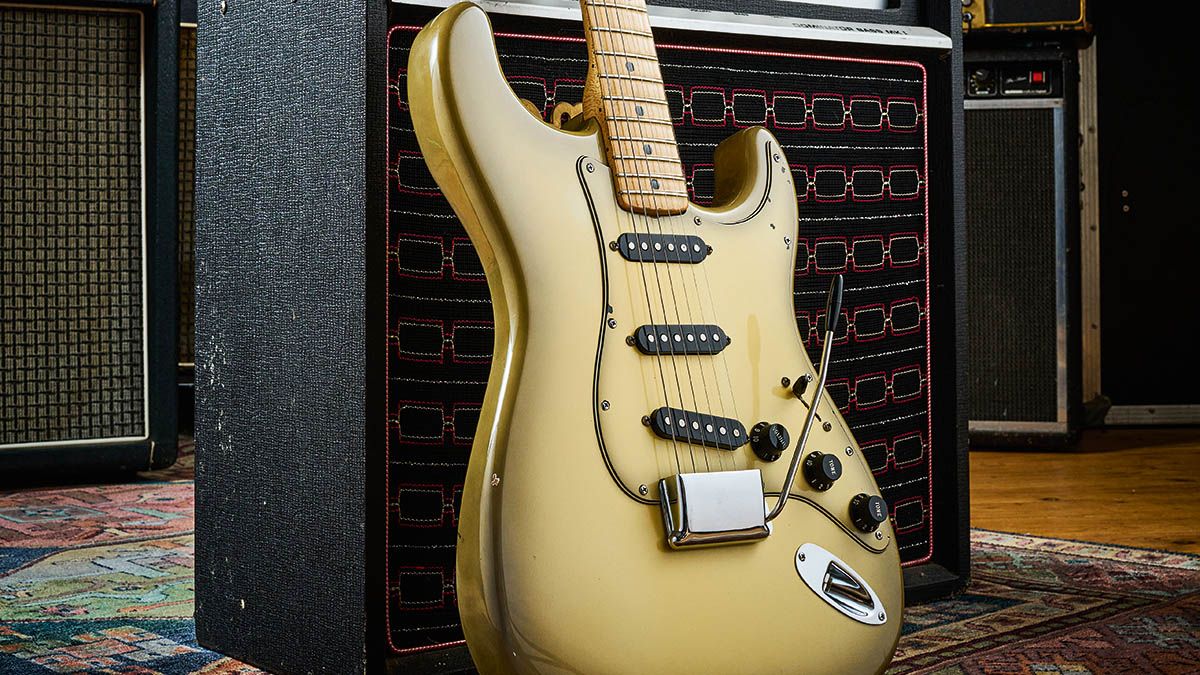Have you ever found yourself pondering the age-old question: Stratocaster or Telecaster? Two iconic guitars, each with a rich history and a dedicated fan base. It’s a debate as old as rock ‘n’ roll itself, and today we’re going to delve into the origins of these legendary instruments. So grab your pick, tune up, and get ready to rock, as we uncover the secrets behind Fender’s most prized possessions.
Contents
- 1 The Birth of the Stratocaster: A New Era in Guitar Design
- 2 The Telecaster Legacy: Setting the Standard for Electric Guitars
- 3 Innovative Features and Distinctive Sound of the Stratocaster
- 4 Simplicity and Versatility: The Core Appeal of the Telecaster
- 5 Comparative Analysis: Performance and Player Preference
- 6 Notable Musicians and Their Influence on the Stratocaster and Telecaster Legacy
- 7 Evolution Through the Decades: How Both Guitars Have Shaped Modern Music
- 8 FAQs
- 9 Rock on with Your Favorite Fender!
The Birth of the Stratocaster: A New Era in Guitar Design
Picture this: it’s the 1950s, rock ’n’ roll is taking the world by storm, and Leo Fender decides to shake up the guitar game with a revolutionary design – the Stratocaster. With its sleek curves, versatile sound, and iconic double-cutaway body, the Stratocaster changed the way artists played and looked on stage. Gone were the days of clunky, boxy guitars – this was a new era in guitar design.
The Stratocaster was like the James Bond of guitars – cool, smooth, and always ready for action. Its three single-coil pickups delivered a bright and twangy tone that cut through the mix like a hot knife through butter. Want to switch up your sound? No problem, just flick the selector switch and find the perfect tone for your shredding needs.
But wait, there’s more! The Stratocaster introduced the world to the whammy bar, allowing players to bend notes and divebomb like never before. It was like having your own personal rollercoaster on your guitar – endless fun and excitement at your fingertips. Plus, with its contoured body and comfy arm rest, the Stratocaster was a dream to play, ensuring that you could shred for hours without missing a beat.
The Telecaster Legacy: Setting the Standard for Electric Guitars
When Leo Fender introduced the Telecaster in 1950, little did he know he was setting the stage for the ultimate electric guitar legacy. The Telecaster, with its signature sound and timeless design, quickly became a favorite among musicians of all genres.
With its unmistakable twang and versatility, the Telecaster has been wielded by legends such as Keith Richards, Bruce Springsteen, and Jimmy Page. Its simple yet powerful design has stood the test of time, making it a staple in the world of rock and roll.
From the vibrant country licks of Brad Paisley to the gritty blues riffs of Joe Bonamassa, the Telecaster’s influence can be heard across generations. Its iconic shape and sound have become synonymous with rock and roll rebellion, making it a guitar that commands respect on any stage.
So, whether you’re a seasoned pro or a novice strummer, the Telecaster is a guitar that’s sure to inspire and delight. Its legacy lives on, setting the standard for electric guitars everywhere. Long live the Telecaster!

Innovative Features and Distinctive Sound of the Stratocaster
Let’s dive into the magical world of the Stratocaster and discover what makes this iconic guitar so special!
First off, let’s talk about the innovative features that set the Stratocaster apart from the rest. With its contoured body shape, smooth tremolo system, and versatile pickup configurations, this guitar is a true game-changer. Plus, who can resist those stylish double cutaways and sleek finish options?
Now, onto the distinctive sound of the Stratocaster. From sparkling cleans to gritty crunch tones, this guitar can do it all. The combination of the three single-coil pickups gives the Strat that signature twang and bell-like chime that is instantly recognizable. Whether you’re playing blues, rock, or jazz, the Stratocaster’s tone will make your music stand out from the crowd.
So, the next time you pick up a Stratocaster, remember that you’re not just holding a guitar – you’re holding a piece of musical history. Embrace the innovation and sonic prowess of this timeless instrument, and let your creativity soar!

Simplicity and Versatility: The Core Appeal of the Telecaster
When it comes to electric guitars, the Telecaster is like that one friend who is always there for you, no matter the occasion. Its simple design and versatile sound make it a staple in any guitarist’s collection.
With just two pickups and a three-way switch, the Telecaster keeps things straightforward. It’s like having a peanut butter and jelly sandwich – sometimes you just want the classics, no fancy ingredients needed.
Whether you’re strumming along to a country tune or shredding through a hard rock solo, the Telecaster can handle it all. It’s like having a Swiss Army knife in guitar form – ready for anything you throw its way.
So if you’re looking for an electric guitar that’s reliable, adaptable, and always up for a jam session, the Telecaster is the way to go. Embrace the simplicity and versatility of this iconic instrument, and let your creativity thrive.

Comparative Analysis: Performance and Player Preference
When it comes to comparing performance and player preference, it can be like trying to choose between pizza or tacos – both are delicious in their own way!
Some players might prioritize performance above all else, preferring a gaming setup that runs like a well-oiled machine. They crave high frame rates, smooth gameplay, and lightning-fast reflexes. On the other hand, there are players who value comfort and aesthetics over raw performance. They might opt for a cozy gaming chair, atmospheric lighting, and a mouse that feels just right in their hand.
It’s like the age-old debate of cats vs. dogs – each side has its loyal followers who will passionately argue for their preferred choice. Some players swear by the latest graphics card or gaming mouse, while others are perfectly content with their trusty old setup that has seen them through countless victories.
At the end of the day, whether you prioritize performance or player preference, it all comes down to personal taste. And just like how some people like their coffee black and strong, while others prefer it sweet and creamy, there’s no right or wrong answer when it comes to gaming setups. So, embrace your inner gamer and choose what works best for you!
Notable Musicians and Their Influence on the Stratocaster and Telecaster Legacy
When it comes to iconic musicians who have left a lasting impact on the legacy of the Stratocaster and Telecaster, there are a few standouts that immediately come to mind.
- Jimi Hendrix – Hendrix’s electrifying performance at Woodstock in 1969 solidified the Stratocaster as a rock guitar staple. His innovative use of feedback and whammy bar techniques revolutionized the way the Stratocaster was played.
- Keith Richards – The legendary Rolling Stones guitarist is synonymous with the gritty, bluesy sound of the Telecaster. His raw, raunchy riffs have inspired countless guitarists to pick up a Telecaster and crank up the distortion.
- Stevie Ray Vaughan – Vaughan’s virtuosic playing on the Stratocaster brought new life to the blues genre in the 1980s. His fiery solos and soulful bends showcased the versatility and dynamic range of the Stratocaster.
These musicians not only shaped the sound of their respective eras but also helped to cement the Stratocaster and Telecaster as two of the most iconic and enduring guitars in history. Their influence can still be felt today in the hands of musicians all over the world.
Evolution Through the Decades: How Both Guitars Have Shaped Modern Music
From the smooth, jazzy tunes of the 1920s to the hard-hitting rock anthems of the 1980s, guitars have been a staple in shaping modern music throughout the decades. Let’s take a look at how both acoustic and electric guitars have evolved and left their mark on the music industry.
Acoustic Guitars:
- Flapper girls dancing to the sounds of the roaring ’20s.
- Bob Dylan strumming his way through the protest songs of the ’60s.
- The sound of peaceful protests at Woodstock in the ’70s.
Electric Guitars:
- Elvis Presley’s hip-shaking moves accompanied by the twang of a Telecaster.
- Jimi Hendrix setting his guitar on fire at the Monterey Pop Festival.
- The hair metal bands of the ’80s shredding their way through power ballads and anthems.
Whether it’s the soft strumming of an acoustic or the screeching solos of an electric, guitars have been an integral part of music for decades. And as long as there are musicians willing to pick up a guitar and rock out, they will continue to shape the sounds of modern music for years to come.
FAQs
Questions
1. Why are the Stratocaster and Telecaster known as iconic guitars?
2. Can you tell us about the origins of the Stratocaster and Telecaster?
3. What makes the Stratocaster unique compared to the Telecaster?
4. How did Leo Fender come up with the design for these guitars?
5. Are there any famous musicians who are known for using either the Stratocaster or Telecaster?
6. What are some key features that set the Stratocaster and Telecaster apart from other guitars on the market?
7. What impact have these guitars had on the music industry as a whole?
8. How have the designs of the Stratocaster and Telecaster evolved over the years?
9. Are there any interesting facts or anecdotes about the development of these iconic guitars?
10. If you had to choose between playing a Stratocaster or a Telecaster, which one would you pick and why
Rock on with Your Favorite Fender!
So there you have it, the epic battle of the Fender guitars – Stratocaster vs. Telecaster! Whether you’re a die-hard Strat fan or a Tele aficionado, one thing’s for sure – Fender’s iconic guitars have been rocking stages and making music history for decades. So grab your axe, crank up the volume, and let the music do the talking. And remember, no matter which side you’re on, at the end of the day, we’re all united by the love of music and the spirit of rock ‘n’ roll. So keep shredding, keep strumming, and keep rocking on!
And as always, may your chords be in tune and your solos be epic. Until next time, keep rocking, my friends! 🤘


